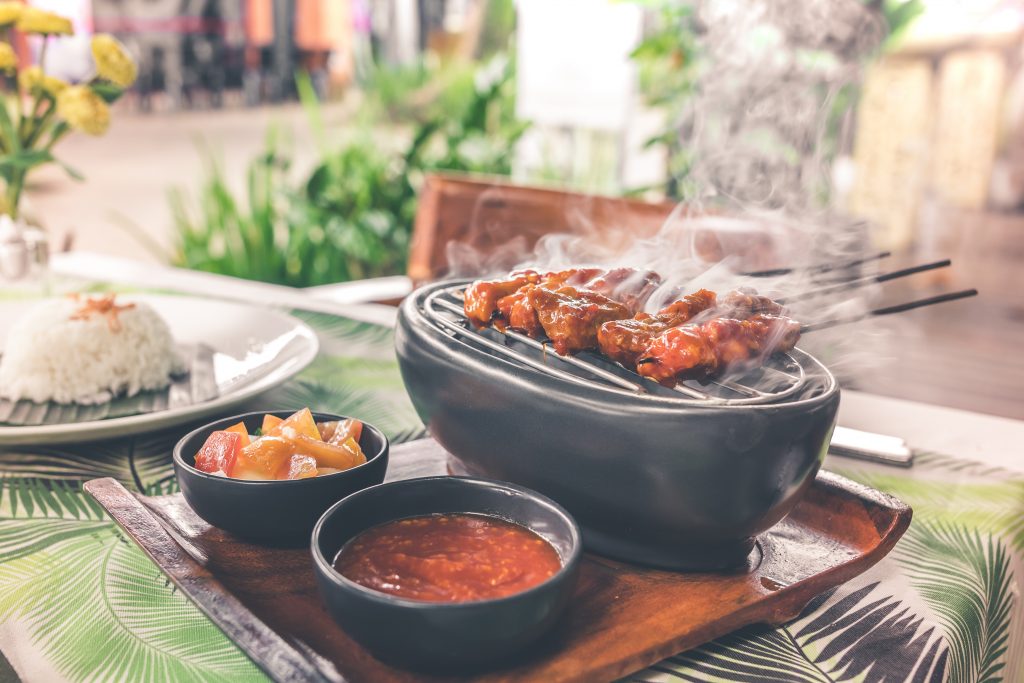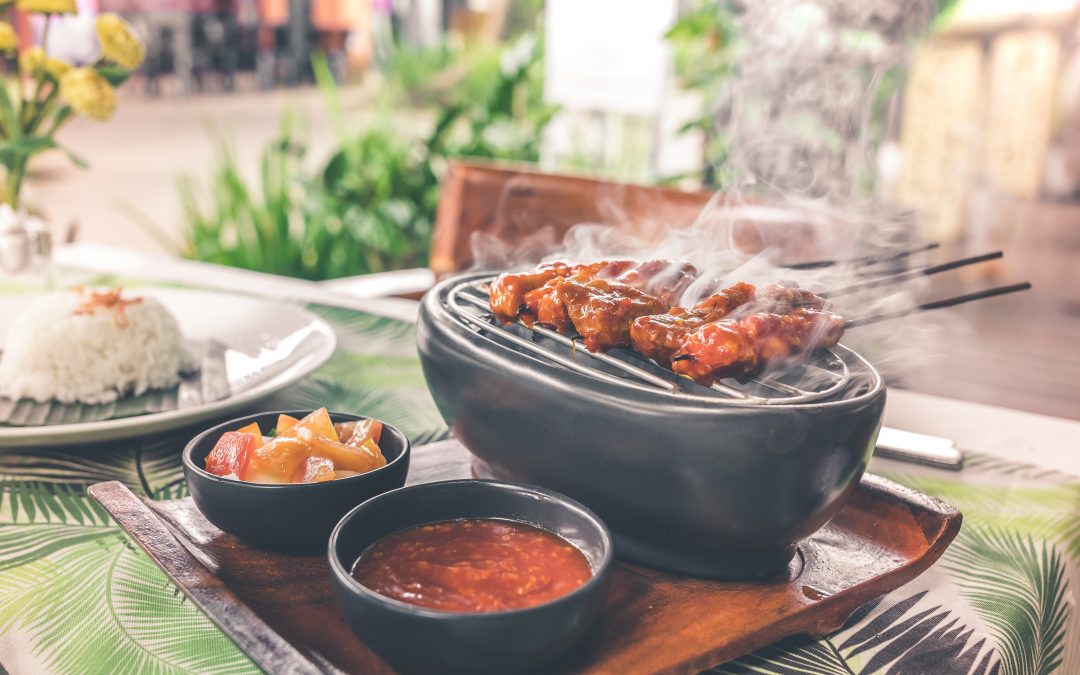Do you know how you’re going to celebrate Dad on Father’s Day? With Father’s Day fast approaching — June 16 — now might be the time to think about whether dad needs a new grill. Sure, he loves his charcoal grill or his gas grill or even his smoker grill, but has he been thinking about changing things up a bit?
If so, there are many types of grills on the market and at the home improvement and outdoor living stores that may have dad drooling over. Also, if dad is the type who grills year round, investing in a new grill might be just what he was hoping for.
Traditionally charcoal and gas grills have ruled the backyard and the backyard chef has embraced them for years, so why change now? Well, why not? If dad fancies himself a chef, why not feed that desire to grill up an amazing meal?
Does Dad Need A New Grill?
 Let’s talk about three different types of grills you may want to consider:
Let’s talk about three different types of grills you may want to consider:
- Dual fuel
- Electric
- Infrared
We’ve already mentioned smokers (wood fired), gas grills and charcoal, so let’s explore the non traditional grill you may want to gift dad with this holiday.
A dual fuel grill provides the outdoor chef the best of both worlds. You can work with two separate sides of the grill and each has its own fuel type. Typically dual fuel grills feature both charcoal and gas.
Why would dad want a dual fuel grill?
The duality of fuel allows for an interchangable way to cook. Keep in mind that gas grills cook much more quickly. Charcoal is a long, slow burn and if you’re cooking on both sides he will need to time it well so both meals or the meal and the sides are done at the same time.
If you’re cooking on the gas side, as you well know, there will not be that smoky, outdoorsy flavor that charcoal imparts. If you aren’t a fan of the charcoal flavor of food then this may not be something you or your family enjoy, but it is certainly an option.
Some fans of dual fuel grills will begin cooking on the gas side then move the food over to the charcoal side to finish it up and give it that smoky flavor. Yum!
Look for a dual fuel grill to have a price point of about $350 and higher depending on the accessories you want.
Some backyard barbecue chefs feel the size of the grilling area is a disadvantage to a dual fuel grill, but it depends on how many items you’re cooking and how many people you’re feeding.
How about an electric grill?
 Electric grills are an option, but there are outdoor grilling fans who would never consider cooking on an electric grill. That is certainly a personal preference but there are some advantages — and some disadvantages — to electric grills, just as there are with any other grilling option.
Electric grills are an option, but there are outdoor grilling fans who would never consider cooking on an electric grill. That is certainly a personal preference but there are some advantages — and some disadvantages — to electric grills, just as there are with any other grilling option.
When you’re cooking on an outdoor grill, you don’t have to worry about dealing with a fuel tank, nor do you have to worry about flames or sparks. Flare ups on an electric grill are virtually non existent.
Using an electric grill means you need to find an electricity source and you will have to make certain the cord isn’t in an area where someone could trip on it — it is definitely a hazard.
Outdoor grill enthusiasts may frown on electric grills. Nevertheless, they are still a viable choice for many that desire is indulging on grilled food. When you use an electric grill you won’t have to worry about the fuel running out in the middle of cooking — we know we’ve all been there! If, however, the power goes out you won’t be able to grill your food — it’s a trade off, we know.
Electric grills will certainly not give you that outdoorsy flavor that cooking on another type of grill will. You can still get the coveted grill marks, but not the coveted barbecue flavor. Many electric grills are smaller than other types, but that does make them more portable. You can probably easily move an electric grill in to the garage if there is a sudden downpour (in fact, this would be a safety issue as electricity and water don’t mix).
Last but not least, infrared grills
Infrared grills are considered new technology and are being embraced by some outdoor chefs. This grill uses gas as a fuel source, but it cooks with an infrared heating element.
To understand the benefits of an infrared grill, you need to understand how it works compared to other, more tradtiional, grills. Gas and charcoal grills cook by heating up the grilling grates as well as the surrounding air inside the grill and around the food. When the heated air is circulating around the food it gives it that smoky flavor and it also can lead to the meat drying out and getting tough. It’s a delicate balancing act.
Infrared grills transfer the heat directly to the grill grates and there isn’t as much heated air circulating and that may leave the meats more tender. This will also help keep the juices inside the meats leading to more tender meat and fewer chances of a flare up.
 If you aren’t patient enough to wait for the charcoal or the gas grill to heat up, you may really want an infrared grill. They heat up quickly — in fewer than five minutes — compare this to the ten minute wait time for a gas grill and an up to twenty minute wait time for a charcoal grill and the time saving aspect may be just what you’re looking for.
If you aren’t patient enough to wait for the charcoal or the gas grill to heat up, you may really want an infrared grill. They heat up quickly — in fewer than five minutes — compare this to the ten minute wait time for a gas grill and an up to twenty minute wait time for a charcoal grill and the time saving aspect may be just what you’re looking for.
The price point of an infrared grill may be a stopping point to entry and purchase. They start at the $1,000 mark and easily go higher in price. Because it’s a new technology, if you need a replacement part you may need to go directly to the manufacturer.
Before you go out and buy dad a new grill, make sure you know what type he likes. In fact, he may enjoy the process of shopping for his own grill with you. Make a day of it, then come home and enjoy a delicious backyard barbecue on the new grill!
Yum!

